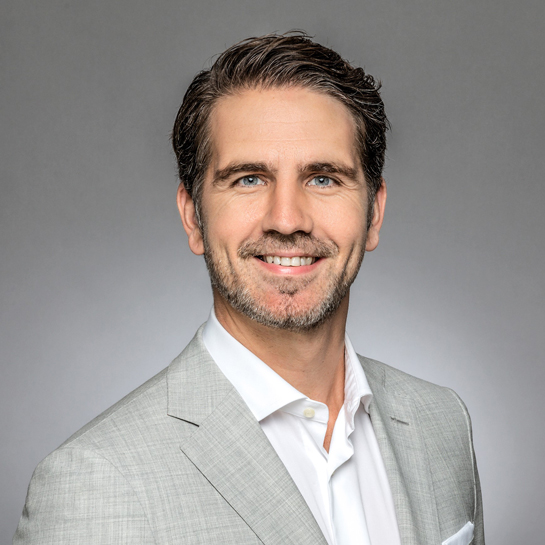EDITORIAL
Dear readers,
With its new coalition agreement, the German government has once again missed the opportunity to send out a strong signal in support of housing construction. Rather than offering a strong impetus for investors, policymakers continue to deliver a mishmash of outdated promises and new regulations. This creates uncertainty, which further constrains urgently needed new construction activity.
In the meantime, real estate prices in Berlin are surging again – with both purchase prices and rents soaring. And this trend is not only confined to the capital itself, but is equally evident in the surrounding Brandenburg region.
Institutional investors are also increasingly returning to the residential real estate market, targeting stable medium-sized cities and modern new developments. Innovative housing models and neighbourhood concepts are also gaining traction.
For investors who are proactive and forward-thinking in their approach to shaping the market, there are, as always, plenty of opportunities.
So, stay informed and flexible in this evolving landscape!
JMS and HFR
ARTICLES
Residential is Back

Sascha Hertach | Managing Director, Arbireo Residential Invest
In 2022, the inflation and interest rate shock meant that, all of a sudden, investors were left to question their positions in real estate as an asset class. Rising prices, increasing devaluation pressures, and uncompetitive yields prompted a retreat from the market. This trend even extended to the residential sector, despite the persistent – and growing – structural surplus in demand from tenants, particularly in Germany’s major cities. However, the narrative is beginning to change and institutional investors are once again rekindling their interest in German residential assets.
Navigating this new terrain depends on having the right strategy in place. Yes, housing in major German cities and metropolitan regions has proven to be one of the most resilient forms of investment: demand for housing consistently outstrips supply, and issues with vacancies and rental losses are infrequent and minor, especially within a well-diversified portfolio. At the same time, it is crucial to acknowledge that purchase prices and construction costs remain high, and the regulatory environment – both in terms of rental agreements and energy standards – introduces complexities that cannot be overlooked. Therefore, understanding not only what to do and how to do it, as well as knowing what to avoid, is essential in capitalising on this evolving market.
For example, you could ignore the housing markets in the most sought-after, A-grade districts in Germany’s top metropolitan areas. Although these neighbourhoods have the strongest demand for housing, and correspondingly high rents, they also have the highest purchase prices. Furthermore, many properties in traditional residential districts require significant renovation, and their energy efficiency often leaves a lot to be desired. Local authorities in these neighbourhoods are also particularly proactive in regulating tenancy and contract arrangements, for example by implementing neighbourhood protection statutes. Although it is possible to invest successfully in these markets, it typically means navigating numerous regulatory hurdles and accepting lower cash flow returns.
In contrast, investing in the suburbs and exurbs of major cities, or in demographically stable or growing cities with populations of 100,000 or more, or in selected university cities, promises better yield potentials with reduced regulatory burdens. Additionally, if you focus on newly constructed or as-new properties, you reduce the pressure to renovate any time soon as legal requirements increase and energy prices rise.
In addition, it is also important to broadly diversify your residential real estate investments. No other real estate asset class offers the same great potential for creating such a granular and diversified portfolio. Your investments could include niche segments, such as social or inclusive housing. Alongside traditional rental income, these also create opportunities to benefit from social housing subsidy programmes. Moreover, it can often make sense to incorporate small commercial units within your multi-storey residential buildings: ground-floor retail outlets or restaurants, for example, can significantly enrich the overall living environment while simultaneously boosting the value of your investment.
With a well-diversified residential portfolio and moderate leverage, we believe that attractive returns are possible. This balanced approach also minimises risk exposure, leading to competitive cash flow returns, including for institutional investors. Furthermore, investing in such properties helps to satisfy a fundamental social need, demonstrating your business’s commitment to society as a whole.
2025: A Year Full of Opportunities for Buyers – But Only If They Have In-House Asset Management Expertise

Moritz Kraneis | Managing Partner, Deutsche Zinshaus
The real estate market finds itself on the verge of a turning point this year. Will we see a cautious recovery? Or will our industry be hit by the major wave of non-performing loans (NPLs) many have been forecasting? In fact, both scenarios are unfolding simultaneously. Price reductions in the residential sector, a result of ongoing insolvencies and financing challenges, are creating fresh opportunities for strategic buyers. However, caution is the order of the day as only those with robust in-house asset management expertise are likely to succeed in exploiting these opportunities.
Market dynamics have undergone a permanent shift as interest rates have soared, construction costs have skyrocketed, and the economy has slowed down. A significant indicator of this shift is the unprecedented surge in insolvencies within the real estate sector. Even long-standing real estate companies are struggling to survive in this new climate – real estate is no longer a guaranteed path to success in an environment devoid of
cheap and plentiful capital. This reality check compels the market to abandon any illusions of relentless value growth and instead face up to the challenges of a more dynamic – and unpredictable – market.
Market Potential Must Be Actively Leveraged
And yet, every crisis creates opportunities. For those buyers who have strategically navigated the market and steered clear of the extreme price spikes during the previous boom, this is an ideal moment to capitalise on high-quality assets now available under more favourable conditions. Properties that once seemed financially unattainable are increasingly coming to market, often at substantial discounts.
However, it would be a mistake to assume that simply because assets can now be acquired at more favourable conditions, success is guaranteed. On the contrary: proactive and skilled asset management is more essential than ever before. After all, properties acquired as a result of insolvencies or refinancing issues often come with unique challenges. They may not be optimally maintained, could have a modernisation backlog, or may even require a strategic realignment to unlock their full potential. Only those who can drive genuine value increases through effective letting management, thoughtful renovations, and strategic refinancing will see long-term benefits.
Comprehensive Asset Management – Comprehensive Service Expertise
The secret to success, therefore, lies in implementing an integrated and strategic vision. Real estate investors must be poised to actively enhance value from the moment they acquire a property. This begins with the professional management of rent rolls to develop a balanced and resilient tenant mix, and ranges from energy-efficient refurbishments that safeguard against long-term risks to tailored refinancing strategies that shield investors from the impact of rising interest rates. All of this underscores the importance of in-house capabilities: Those who can manage these tasks themselves, rather than relying on external service providers, will have a significant competitive advantage.
At the same time, this evolving market situation, coupled with rising demands in asset management, are also driving a natural market shakeout. While speculative investors and opportunistic “bounty hunters” are exiting stage left, long-term portfolio holders with genuine asset management expertise are emerging stronger and more resilient than ever. Companies that have proactively cultivated relationships with banks, insolvency administrators, and mezzanine capital providers will uniquely position themselves to capitalise on early access to lucrative opportunities as and when they arise.
Summary
In its current phase, the real estate market is creating some extraordinary opportunities – but only for buyers with genuine asset management expertise. In these turbulent times, achieving long-term success isn’t merely about making timely acquisitions, it demands the ability to transform potentially distressed properties into sustainable assets that maintain their value over time. Alongside professional tenancy management and energy-efficient renovations, this also includes a robust financing strategy and early engagement with key market players. Investors who master these challenges are not only poised to thrive amid the current market turbulence, they will emerge from the crisis even more resilient and better positioned for long-term growth.
Colourful and Multifaceted – The Future of Living

Heiko Süß | Head of Fund Management Core Living, PATRIZIA SE
As societal and population structures evolve, so too do requirements for contemporary living spaces. One of the most significant ongoing demographic shifts is the increase in average life expectancy across the globe as a result of healthier lifestyles and declining birth rates. According to forecasts from the World Economic Forum, more than a third of the EU population is expected to be over the age of 65 by the year 2100.
One thing is certain: This growing population of seniors will require age-appropriate living space and that presents real opportunities for the real estate industry, which will be called upon to construct senior-friendly, barrier-free apartments offering convenient – ideally pedestrian – access to essential infrastructure such as healthcare services, public transportation, shops, and other amenities.
However, the demand for modern living spaces extends beyond senior citizens. Demands on living space are increasingly evolving – across generations. In an increasingly knowledge and service-oriented economy, more and more school leavers are deciding to pursue a university education, a shift that also intensifies demand for modern student accommodation.
Added to this, urbanisation is advancing at an inexorable pace, with more and more people moving to cities, in part in the hope of enhancing their career prospects. According to the United Nations, around 68 per cent of the world’s population is projected to live in cities by the year 2050. And while remote working is becoming increasingly popular, it remains an impractical option for a significant proportion of the workforce. Essential workers, in particular, will have no option but to continue to live and work in cities.
The more these demographic trends assert themselves, the more we will have to rethink where and how we want to live in the future. One example of an innovative housing solution is the multi-generation house, of which there are around 540 in Germany. Popular with young and old alike, the concept offers numerous benefits. The synergy between younger and older generations helps safeguard seniors from loneliness and promotes their continued integration into society – by giving them the chance to provide practical assistance, such as helping with childcare or homework, for example.
Simultaneously, more and more young professionals are looking for housing in bustling urban centres. Career starters in particular often prefer the flexibility that shared living arrangements offer over traditional long-term rental contracts, especially as they often want to avoid being tied to a permanent place of residence.
“Co-living spaces” are also emerging as a compelling option, allowing residents to retreat within their own four walls whenever they want to while also enjoying the company of others in communal areas and during organised leisure activities. For those seeking added convenience, additional services such as cleaning, fitness classes and restaurant visits are available for an supplementary charge.
Looking ahead, the concept of communal living is poised to become more attractive among older adults. Instead of having to worry about home maintenance, this type of housing offers essential social support and opportunities to actively participate in community life. Hybrid houses and multi-purpose spaces are also becoming increasingly popular, particularly as they allow greater flexibility in terms of layout and space utilisation. These spaces can be reconfigured to meet changing needs, moving away from traditional single-purpose designs.
Moreover, the concept of the “15-minute city” is rapidly gaining momentum in response to the challenges posed by urban sprawl. This innovative urban planning approach aims to give residents access to all essential services – such as schools, government agencies, and shops – within a quarter of an hour by bike or on foot. As a knock-on effect, CO2 emissions would fall as no one would be so reliant on cars anymore.
At the same time, housing needs to remain affordable. Recent data indicates that rents in major cities have been rising faster than incomes, forcing many people out of the housing market. For a significant portion of the population, modern living space is simply unaffordable. According to a report by the EU’s Housing Partnership, more than 80 million people in Europe currently spend more than 40 per cent of their household income on rent. In light of this alarming shortage of affordable housing, PATRIZIA has launched its first impact investment strategy, “Sustainable Communities”, which aims to develop affordable housing for low-income and middle-income households. The first communities are currently being developed in Milton Keynes near London and in Dublin.
The desire to strike an optimal balance between work, leisure and relaxation is reflected in the latest generation of special-purpose accommodation. Today’s students expect more than just a room of their own: they want communal study areas and additional amenities such as on-campus fitness facilities. Unfortunately, in many European university cities, the availability of purpose-built student accommodation remains critically low and is often available to less than 10 per cent of the student body.
A prime example of the future of modern and versatile living spaces is currently taking shape along the banks of the Havel River in the Spandau district of Berlin. Here, groundbreaking residential and neighbourhood concepts are being developed, featuring a diverse array of housing options, including 1,700 one-, two-, and three-room units, townhouses, barrier-free flats, and shared apartments. Havelufer Quartier is designed from the ground up to foster social interaction and boasts a wide range of amenities, such as restaurants and fitness studios, that enhance community engagement. More multifunctional residential complexes based on the Havelufer Quartier model are sure to follow in the very near future.
A government with the handbrake on cannot build new housing

Jürgen Michael Schick, FRICS | Managing Director, MICHAEL SCHICK IMMOBILIEN GmbH & Co. KG
The recent coalition agreement announced by the centrist CDU/CSU bloc and the centre-left SPD spans 144 pages, yet only three of those pages address a critical issue that impacts the daily lives of millions of people in Germany: housing. My concern is not with the number of pages; in this context, the fewer the regulations, the better. And rather than unnecessary micromanagement, a clear signal would have been enough to set private capital flowing into new construction. Unfortunately, the coalition agreement fails to send any such signal.
A hodgepodge that pleases no one
The coalition agreement, rather than providing a clear signal to investors, presents a jumble of old promises and new restrictions, all based on the dangerous misunderstanding that housing construction and tenancy law can be kept separate.
Imagine a soup. A handful of fresh ingredients, lots of familiar staples, and, finally, a dash of bitter spices. The result is unpalatable, much like the housing policy outlined in this agreement. While the recipe has a few promising elements, such as the introduction of a simplified building type E, a pledge to revise the Building Energy Act and a commitment to reduce bureaucratic hurdles, these ingredients are undermined when, at the same time, investors are deterred by a raft of new requirements. After all, anyone who wants to build must also be allowed to rent. And that is precisely where the problem lies. There is a lack of genuine support for private property ownership and no reduction in land transfer taxes whatsoever.
New tenancy law, same old mistakes
The rent price brake (Mietpreisbremse) and the ban on converting rental units into condominiums are being extended, stricter regulations on index-linked rents are being introduced, and local authorities’ rights of first refusal are being expanded. Short-term rentals are once again being targeted, and modernisation projects face additional uncertainty. An “expert commission” has been tasked with exploring additional regulations by the end of 2026, including the potential reform of Section 5 of the German Commercial Criminal Code (WiStrG) on usurious rents. The anticipated collaboration between the Ministry of Construction and the Ministry of Justice, both of which will soon be under the control of the left-wing SPD, gives an idea of which direction the journey will take. While these measures may at first sound like good ideas, they are all quite divorced from reality. They insinuate social progress, but achieve the opposite. We should not forget that none of these new regulations will create a single new home. What is missing is a real change of perspective. If you want to increase supply, you need to strengthen those who build rather than impose restrictions on those who rent.
The social injustice of the rent price brake
The impact of rent regulations is well-documented. A decade of the rent price brake has created in nothing but legal uncertainty and frustration for both landlords and prospective tenants. Moreover, Germany’s version of rent control totally ignores the social landscape. For instance, a senior physician may now occupy the same apartment as before, but at a reduced cost, while the free market has been stripped of its essential regulatory function. This is not social justice, it is emotion-based symbolic politics at the expense of property owners. But politicians who punish the owners of existing housing because of their own failures to facilitate new construction are pursuing a policy rooted in envy. Such an approach undermines public confidence in policies that should encourage property ownership rather than cast suspicion upon it.
If no one is building, there will be no landlords
The proposed expansion of municipalities’ right of first refusal is particularly problematic. This is an instrument that provides ample proof of how easy it can be to squander taxpayer funds, as all it accomplishes is the transfer of property – at the expense of freedom of contract. The hope that this policy will in any way stabilize rents is naive. After all, the quality of a building does not improve just because it is owned by the city. Future sellers will likely be apprehensive about the implications of plans to enhance local authorities’ right of first refusal to allow them to buy at a discount.
What this government also fails to realize is that today’s developers are tomorrow’s landlords. If developers are scared off, it will create a void in the rental market as there will be no landlords. And without landlords, there can be no tenants. Social tenancy law has long since gone off the rails. Private property owners serve as the backbone of our rental housing market; if they withdraw, we will be left with only large corporations and the public sector. Is that really the better model?
What are we waiting for?
The government’s approach is not only economically perilous, it is also politically unsafe. Anyone who thinks the issue of housing can be left to the junior coalition partner is not only risking a standstill in housing policy, they are also alienating themselves from their own base. Many property owners, small and medium-sized enterprises and family-run businesses voted for the CDU/CSU because they believed in a housing policy turnaround and market-driven solutions. Presenting these groups with yet another cycle of regulation does nothing to strengthen trust in the new federal government.
So, what should we do now? Should we wait for the next government? Should we hope for better times? No. Now is the time to reignite the debate on housing policy. With a clear focus on what works: promoting homeownership; maintaining stability in tenancy laws; expediting planning processes; and, finally, treating investors as partners rather than problems. In the recent coalition negotiations, the biggest issues in tenancy law were deferred to an “expert commission”, true to the motto: “If I don’t know what to do, I’ll set up a working group”. But we will all know soon enough which political direction the new federal government’s housing policy is going to take.
And let’s none of us forget: affordable housing is not created by legal paragraphs, but by trust. Trust in the market, in owners, in common sense. Anyone who fails to understand this does not stand a chance of solving the housing crisis.
News

Property Prices in Berlin Continue to Rise
Prices for residential real estate are once again on the rise, as confirmed by recent data from the Association of German Pfandbrief Banks (VDP). In the first quarter of 2025, average property prices across Germany increased by 3.6 per cent. However, in the top seven cities, including Berlin, growth was even more dynamic, with an increase of 4.6 per cent compared to the same quarter of the previous year. The sharpest rises were registered in Cologne and Frankfurt, both of which recorded increases of 5.2 per cent. In Berlin, property prices rose by 4.9 per cent, in Hamburg by 4.6 per cent, and in Munich by 4.5 per cent. In contrast, Düsseldorf and Stuttgart experienced more moderate growth at 3.2 per cent and 1.9 per cent, respectively. Rental price growth was also buoyant, particularly for new contracts in multi-family properties. Nationwide, rents have risen by an average of 4.3 per cent compared to the same quarter last year, with major cities experiencing an even greater increase of 4.4 per cent, and Berlin posting strong rental growth of almost five per cent. Jens Tolckmitt, Managing Director of VDP, notes that this surge in property and rental prices shows that investors are becoming increasingly active in the market again. He anticipates that this trend will continue and rents and prices will to continue to rise, although he cautions that it would be a mistake to read too much into the latest price increases – the current environment remains challenging, with the ongoing U.S. trade dispute, high interest rates, and the high cost of real estate financing showing no signs of abating.

Berlin Metropolitan Area – Broader Brandenburg Region Reaps Benefits
The recent study “Postbank Wohnatlas 2025” (“Postbank Housing Atlas 2025”) conducted by the Hamburg Institute of International Economics (HWWI) on behalf of Postbank, has identified the German regions with the best projected price growth to 2035. According to the study, significant price increases are expected in the areas surrounding Berlin in particular, with the rural district of Barnim poised to enjoy the most impressive price growth. In Barnim, inflation-adjusted price growth for condominiums is forecast to average 1.3 per cent per year until 2035. The study’s regional ranking illustrates the extent to which demand for housing in Berlin has a ripple effect on the broader Brandenburg area. Notably, five districts in Brandenburg are among the top ten regions in Germany with the fastest-growing property price growth. Brandenburg’s state capital, Potsdam, ranks fifth among Germany’s larger cities (populations over 100,000), with average annual growth of 0.9 per cent forecast until 2035. The study’s authors identify this as part of a larger nationwide trend, which is seeing a growing number of people migrate towards the suburbs and exurbs around metropolitan areas, driven by the rising cost of housing in major cities. While rural areas experience stagnating or declining prices, regions around the biggest cities are witnessing dynamic price growth. The Housing Atlas identifies other conurbations poised for growth, including the Greater Hamburg area, southern Bavaria, and a number of vacation regions. Nationally, inflation-adjusted purchase prices for condominiums are expected to rise by an average of 0.4 per cent annually.

Berlin’s Socialisation Act Delayed
Berlin’s centre-right CDU and centre-left SPD coalition government has delayed the introduction of the Vergesellschaftungsrahmengesetz (Framework Socialisation Act) announced in the two parties’ 2023 coalition agreement. The latest delay was indirectly confirmed by the city’s fiscal authorities in response to a written enquiry from the Green Party’s councillor Katrin Schmidberger in March. The legal assessment for the proposed legislation, initially promised in September 2023, has yet to be commissioned. The final text of the call for tenders was reportedly still being finalised and would be published “in late April, early May”. According to the taz newspaper, the tender was finally published on April 17, 2025. The Senate says it expects the final draft bill “in the last year of the current legislative period”, before the next elections for Berlin’s House of Representatives in autumn 2026. The Framework Socialisation Act is the Senate’s response to the “Deutsche Wohnen & Co. Enteignen” initiative, which successfully campaigned for a referendum in support of the expropriation of major real estate companies in 2021. Berlin’s Governing Mayor Kai Wegner (CDU) has adopted an ambivalent position towards the initiative. While he sees the draft law as an opportunity to finally establish legal clarity, he personally rejects expropriations and socialisations, as they would do nothing to create a single new apartment. The proposed Framework Socialisation Act would impact over 240,000 rental apartments across Berlin owned by approximately a dozen real estate companies.





















































